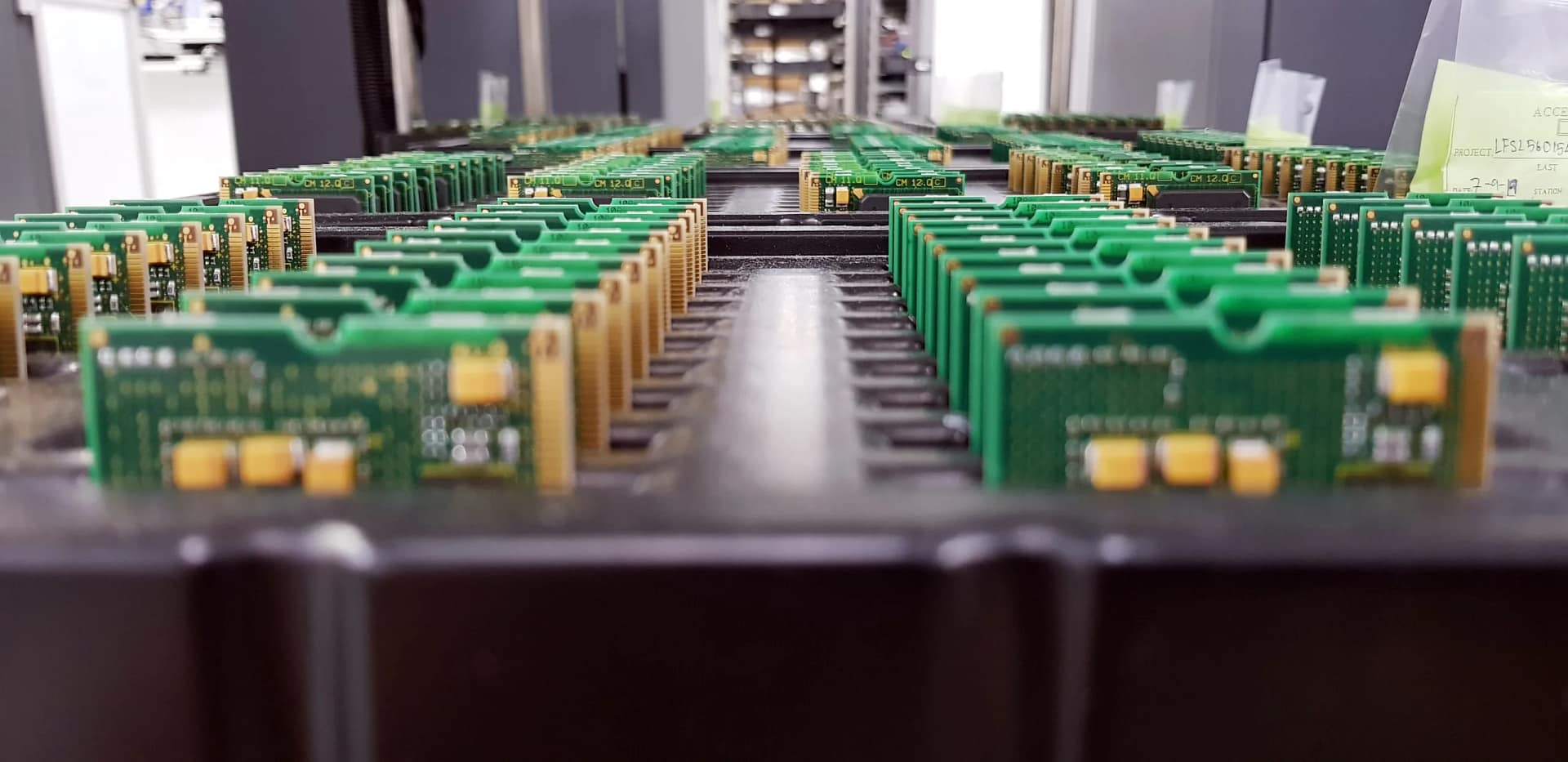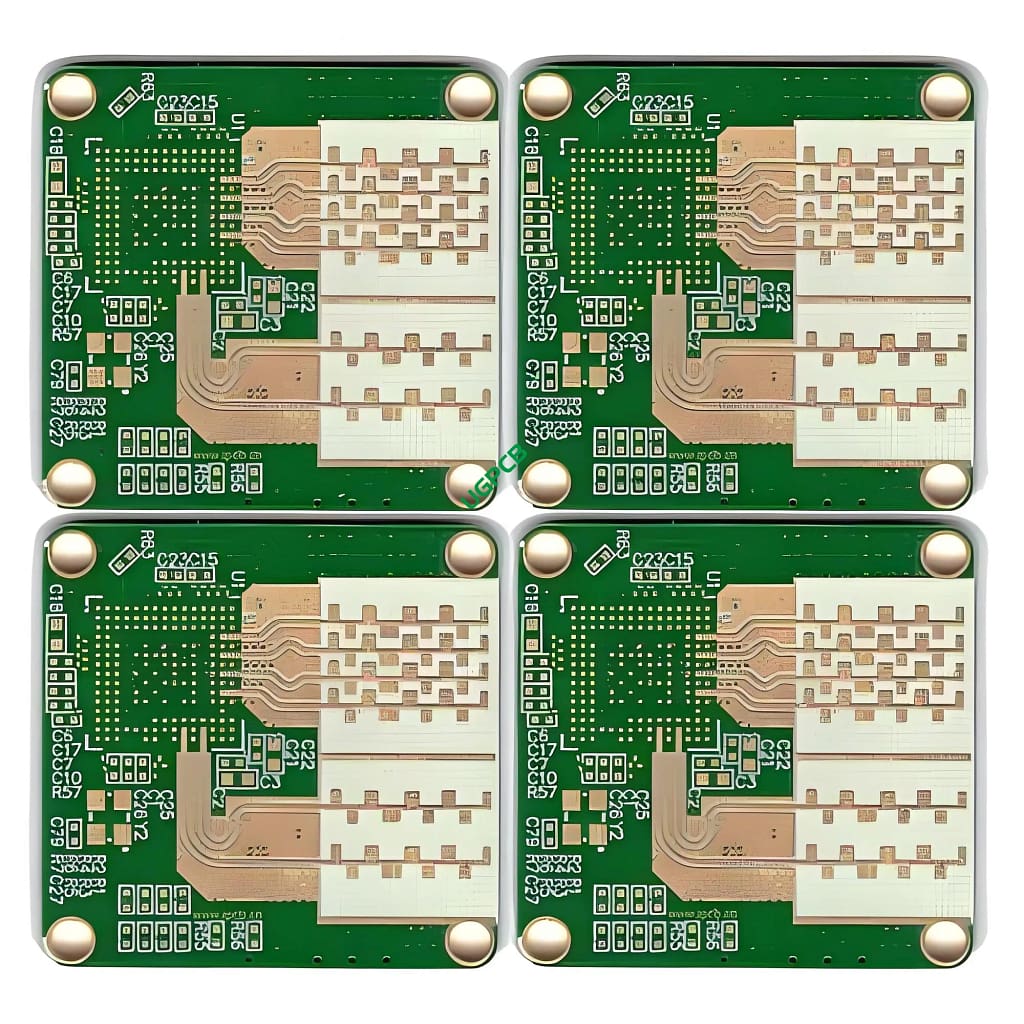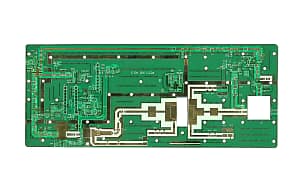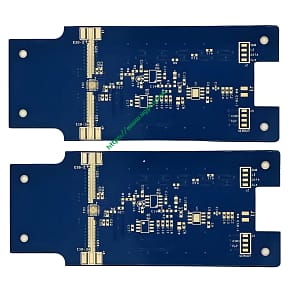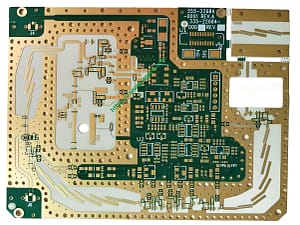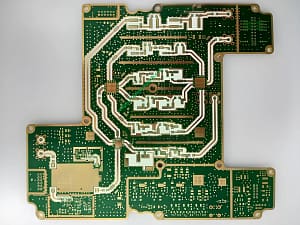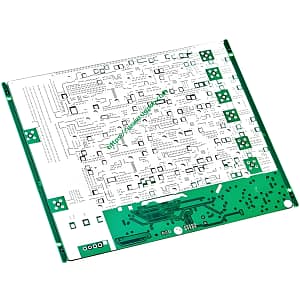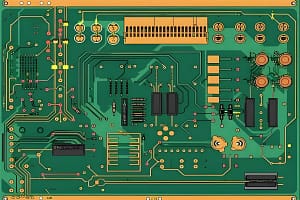Überblick über Hochfrequenz -PCB
A Hochfrequenz-Leiterplatte ist eine spezialisierte Art von Leiterplatte, die für den Betrieb mit hohen Frequenzen ausgelegt ist, Typischerweise im Bereich von Gigahertz (GHz). Diese PCBs sind für Anwendungen, die eine präzise Signalübertragung und einen minimalen Signalverlust erfordern. Sie werden in Branchen wie Telekommunikation häufig eingesetzt, Radarsysteme, und Satellitenkommunikation. Der Qualitätsstandard für hochfrequente PCBs ist IPC 6012 Klasse 2, Gewährleistung einer hohen Zuverlässigkeit und Leistung.

Definition und Schlüsselspezifikationen
Eine Hochfrequenz-PCB wird durch seine Fähigkeit definiert, Signale bei sehr hohen Frequenzen zu behandeln und gleichzeitig die Signalintegrität beizubehalten. Die Dielektrizitätskonstante (DK) dieser PCBs reicht von 2.0 Zu 1.6, das ist entscheidend für die Steuerung der Signalgeschwindigkeit und der Impedanz. Die Anzahl der Schichten kann variieren von 1 Zu 36, Flexibilität für unterschiedliche Designanforderungen bereitstellen. Die Dicke der PCB reicht von 0,254 mm und 12 mm, und die Kupferdicke kann entweder 0,5 Unzen oder 1 Unzen betragen. Oberflächentechnologien umfassen Silber, Gold, und OSP, Jeder bietet unterschiedliche Vorteile in Bezug auf Lötlichkeit und Korrosionsbeständigkeit. Spezielle Prozesse wie gemischte Materialien und Stufen-Grooves verbessern die Leistung von Hochfrequenz-PCBs weiter.
Konstruktionsüberlegungen
Bei der Gestaltung einer Hochfrequenz-PCB, Mehrere Faktoren müssen berücksichtigt werden:
- Dielektrizitätskonstante (DK): Der DK -Wert zwischen 2.0 Und 1.6 ist entscheidend für die Aufrechterhaltung der Signalintegrität bei hohen Frequenzen.
- Anzahl der Schichten: Die breite Palette der Ebenenoptionen (1 Zu 36) Ermöglicht eine Anpassung anhand bestimmter Anwendungsanforderungen.
- Dicke: Die Dicke endet zwischen 0,254 mm und 12 mm, bietet Flexibilität im Design, Verringerung der unterschiedlichen räumlichen und funktionalen Anforderungen.
- Kupferdicke: Die Auswahl zwischen 0,5 Unzen und 1oz Basiskupfer beeinflusst die Stromversorgerkapazität und die Signalintegrität.
- Oberflächentechnologie: Optionen wie Silber, Gold, und OSP liefern unterschiedliche Lötbarkeits- und Korrosionsbeständigkeit.
- Besondere Prozesse: Techniken wie gemischte Materialien und gestufte Rillen können die Leistung von PCBs mit hoher Frequenz erheblich verbessern.
Arbeitsprinzip
Hochfrequente PCBs arbeiten basierend auf dem Prinzip der kontrollierten Impedanz und dem minimalen Signalverlust. Die Dielektrizitätskonstante der verwendeten Materialien stellt sicher, dass Signale mit minimaler Verzögerung und Verlust reisen, Aufrechterhaltung ihrer Integrität. Die genaue Kontrolle über Dicke und Kupfergewicht ermöglicht eine konsistente Impedanz, was für die Hochfrequenzsignalübertragung von entscheidender Bedeutung ist. Oberflächentechnologien wie Silber, Gold, und OSP bieten zuverlässige Verbindungspunkte für Komponenten, Gewährleistung einer effizienten Signalübertragung.
Anwendungen
Hochfrequente PCBs werden in einer Vielzahl von Anwendungen verwendet, für die Hochgeschwindigkeitsdatenübertragung und Signalintegrität erforderlich sind:
- Telekommunikation: Gewährleistung einer klaren und zuverlässigen Signalübertragung in Mobiltelefonen, Basisstationen, und andere Kommunikationsgeräte.
- Radarsysteme: Bereitstellung einer genauen und zuverlässigen Signalverarbeitung in militärischen und zivilen Radarsystemen.
- Satellitenkommunikation: Erleichterung der schnellen und zuverlässigen Datenübertragung zwischen Bodenstationen und Satelliten.
Einstufung
Hochfrequente PCBs können basierend auf mehreren Kriterien klassifiziert werden:
- Frequenzbereich: In der Regel bei Gigahertz operieren (GHz) Frequenzen.
- Anzahl der Schichten: Reicht von 1 Zu 36 Schichten, Abhängig von der Komplexität der Schaltung.
- Dicke: Optionen von 0,254 mm bis 12 mm ermöglichen die Anpassung anhand bestimmter Anwendungsanforderungen an die Anpassung.
- Kupferdicke: Standard- und schwere Kupferoptionen (0.5Oz und 1oz) achten auf unterschiedliche Stromversorgerkapazitäten.
- Oberflächentechnologie: Entscheidungen wie Silber, Gold, und OSP liefern unterschiedliche Lötbarkeits- und Korrosionsbeständigkeit.
Materialeigenschaften
Die wichtigsten Eigenschaften von hochfrequenten PCB-Materialien umfassen:
- Niedrige Dielektrizitätskonstante: Sorgt für minimale Signalverzögerung und Verlust, sie für hochfrequente Anwendungen geeignet machen.
- Breiter Dicke: Ermöglicht Flexibilität im Design, Verringerung der unterschiedlichen räumlichen und funktionalen Anforderungen.
- Hervorragende Signalintegrität: Behält die Signalintegrität auch bei hohen Frequenzen bei, Gewährleistung zuverlässiger Leistung.
- Zuverlässige Verbindungspunkte: Oberflächentechnologien wie Silber, Gold, und OSP liefern starke und zuverlässige Verbindungspunkte für Komponenten.
Produktionsprozess
Die Produktion eines Hochfrequenz-PCB umfasst mehrere Schritte:
- Materialauswahl: Auswahl von Materialien mit einer niedrigen Dielektrizitätskonstante und einer hohen Signaltreue.
- Schaltungsdesign: Erstellen des Schaltungslayouts mit Überlegungen zur Hochfrequenzleistung und der Signalintegrität.
- Radierung: Entfernen Sie unnötiges Kupfer, um das gewünschte Schaltungsmuster zu erstellen.
- Laminierung: Mehrere Schichten unter hohem Druck und Temperatur miteinander verbinden, um eine starke und zuverlässige Verbindung zu gewährleisten.
- Oberflächenbearbeitung: Oberflächentechnologien wie Silber anwenden, Gold, oder OSP, um die Lötlichkeit und Korrosionsresistenz zu verbessern.
- Besondere Prozesse: Verwendung von Techniken wie gemischten Materialien und gestuften Rillen, um die Leistung weiter zu verbessern.
- Test- und Qualitätskontrolle: Sicherstellen, dass das Endprodukt alle Spezifikationen und Standards erfüllt.
Szenarien verwenden
Hochfrequenz-PCBs werden in Szenarien verwendet, in denen die Hochgeschwindigkeitsdatenübertragung und die Signalintegrität kritisch sind:
- Mobiltelefone: Gewährleistung einer klaren und zuverlässigen Signalübertragung in modernen Smartphones.
- Basisstationen: Bereitstellung einer genauen und zuverlässigen Signalverarbeitung in der Kommunikationsinfrastruktur.
- Radarsysteme: Genauige und zuverlässige Signalverarbeitung in militärischen und zivilen Radaranwendungen ermöglichen.
- Satellitenkommunikation: Erleichterung der schnellen und zuverlässigen Datenübertragung zwischen Bodenstationen und Satelliten.
Zusammenfassend, Hochfrequenz-PCBs sind spezielle Leiterplatten, die für die Hochgeschwindigkeitsdatenübertragung und die Signalintegrität entwickelt wurden. Ihre niedrige Dielektrizitätskonstante, breiter Dicke, und hervorragende Signaltreue machen sie ideal für Anwendungen in Telekommunikation, Radarsysteme, und Satellitenkommunikation.
 UGPCB-LOGO
UGPCB-LOGO
